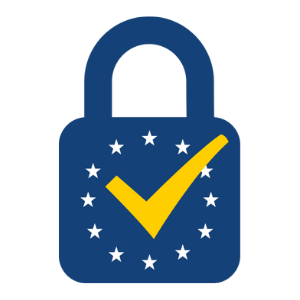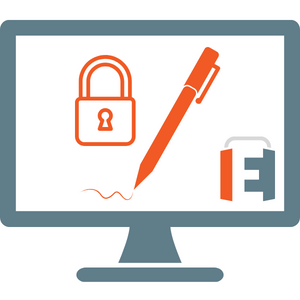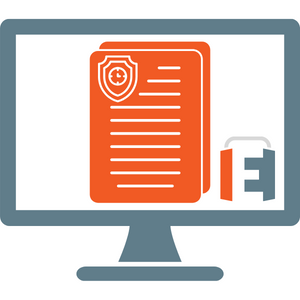Entaksi Documentation Regarding eIDAS or Other Qualified Services
This page contains the documents supporting qualified or other types of services provided by Entaksi Solutions SpA in compliance with national and international regulations:
Qualified Trust Services according to the eIDAS Regulation for:
- issuance of qualified certificates for electronic signatures and seals;
- creation of electronic timestamps;
- long-term preservation of electronic signatures and seals;
- AgID qualified preservation system;
- Advanced Electronic Signature.
Each section specifies the scope of application of the documents and the models and standards used for their drafting.
For more detailed information, please refer to the reference page within the European List of Qualified Trust Service Providers.

Qualified Electronic Signatures and Seals

Entaksi manages the following Certification Authorities:
- Entaksi QTSP Root CA G1, an internal root certification authority used to sign the subordinate CAs.
- Entaksi Qualified Time-stamps CA G1, the certification authority that issues certificates for the Time Stamp Unit (TSU) used by the qualified electronic timestamp creation service.
- Entaksi Qualified Electronic Signatures CA G1, the certification authority used by Entaksi for issuing qualified certificates for electronic signatures.
- Entaksi Qualified Electronic Seals CA G1, the certification authority used by Entaksi for issuing qualified certificates for electronic seals.
Addresses of the Certificate Revocation Lists (CRLs) managed by Entaksi:
- Entaksi QTSP Root CA G1: https://va.entaksi.eu/crls/Entaksi_QTSP_Root_CA_G1.crl
- Entaksi Qualified Time-stamps CA G1: https://va.entaksi.eu/crls/Entaksi_Qualified_Time-stamps_CA_G1.crl
- Entaksi Qualified Electronic Signatures CA G1: https://va.entaksi.eu/crls/Entaksi_Qualified_Electronic_Signatures_CA_G1.crl
- Entaksi Qualified Electronic Seals CA G1: https://va.entaksi.eu/crls/Entaksi_Qualified_Electronic_Seals_CA_G1.crl
The Online Certificate Status Protocol (OCSP) profile complies with the model defined in RFC 6960.
The OCSP responder is available at the following link: https://va.entaksi.eu/ocsp.
The OCSP responder does not return “good” as a result for a non-existent certificate.
Both the CRLs and the OCSP profile are available 24×7.
Entaksi provides qualified electronic signatures and seals exclusively through USB tokens issued following in-person identification.
Time Stamps
Entaksi Solutions SpA provides a Qualified Time Stamping Service, offering certified timestamps that are essential to prove the integrity and creation date of digital documents, as they create digital evidence that a document existed in a specific form at a precise moment in time.
This is particularly important to ensure the legal validity of digital documents, for example in cases of digital signatures, financial transactions, or judicial processes.
The root certificate of the certification authority for Entaksi’s qualified timestamps is available at the following link:
Entaksi Qualified Time-stamps CA G1
In the “Documentation” section, you can find the documents related to the Qualified Time Stamping Service, provided in accordance with the requirements of Article 42 of Regulation (EU) No. 910/2014 (eIDAS) and compliant with the ETSI EN 319 421 standard.
In the “Contractual Terms” section, you can find a template of the service contractual conditions, as required by the ETSI EN 319 401 standard.


Entaksi provides a qualified preservation service for qualified electronic signatures and seals.
The service is designed to extend the reliability of qualified electronic signatures beyond their technological validity period, as specified in Article 34 of Regulation (EU) No. 910/2014 (eIDAS).
This service also applies to qualified electronic seals, as specified in Article 40 of the Regulation.
The service supports the following preservation profiles:
- 1.3.6.1.4.1.57823.2.1.1 – Traditional preservation profile.
- 1.3.6.1.4.1.57823.2.1.3 – Long-term preservation profile for data and electronic signatures with storage and validity extension 2024-01.
The preservation profile supports a preservation framework consisting of the WST storage model (with archiving) and the preservation objectives PGD (general data preservation), PDS (electronic signature preservation), and AUG (validity extensi
AgID Qualified Preservation
To provide reliable preservation services compliant with multiple regulations, Entaksi Solutions SpA has obtained the qualification as a digital document conservator from the Agency for Digital Italy (AgID) and is listed in the Preservation Services Marketplace.
This listing guarantees compliance with the requirements ensuring the security, integrity, and immutability of electronic documents.
The rules for qualified conservators are defined in the “Regulation on the Criteria for Providing Digital Document Preservation Services” published in December 2021.
Qualified conservators are required to publish a Preservation Manual, prepared according to the criteria outlined in the “Guidelines on the Formation and Management of Electronic Documents“.
In the “Documentation” section, the latest updated version of the Entaksi Preservation Manual and useful references for verifying compliance with current regulations are provided.


Entaksi Solutions SpA has developed an Advanced Electronic Signature (AES) service, a digital authentication method used to ensure the integrity and immutability of a digital document.
According to Article 26 of Regulation (EU) No. 910/2014 (eIDAS), in order to guarantee the unique identification of the signatory, an AES must be:
- uniquely linked to the signatory;
- capable of identifying the signatory;
- created using electronic signature creation data that the signatory can, with a high level of confidence, use under their sole control;
- linked to the signed data in such a way that any subsequent changes to the data are detectable.
The solution proposed by Entaksi is based on collecting the signatory’s data and using a one-time password (OTP) token system through channels accessible exclusively to the signatory.
The AES developed by Entaksi has the same probative value as a handwritten signature.
In the “Documentation” section, you can find the information notice for the use of the Advanced Electronic Signature offered by Entaksi through the eSIGN service, which includes the terms of use, information demonstrating the service’s compliance with legal requirements, details of the implemented system and technologies, and instructions on how to submit requests to Entaksi, as required by Article 57 of the Decree of the President of the Council of Ministers of 22 February 2013.


